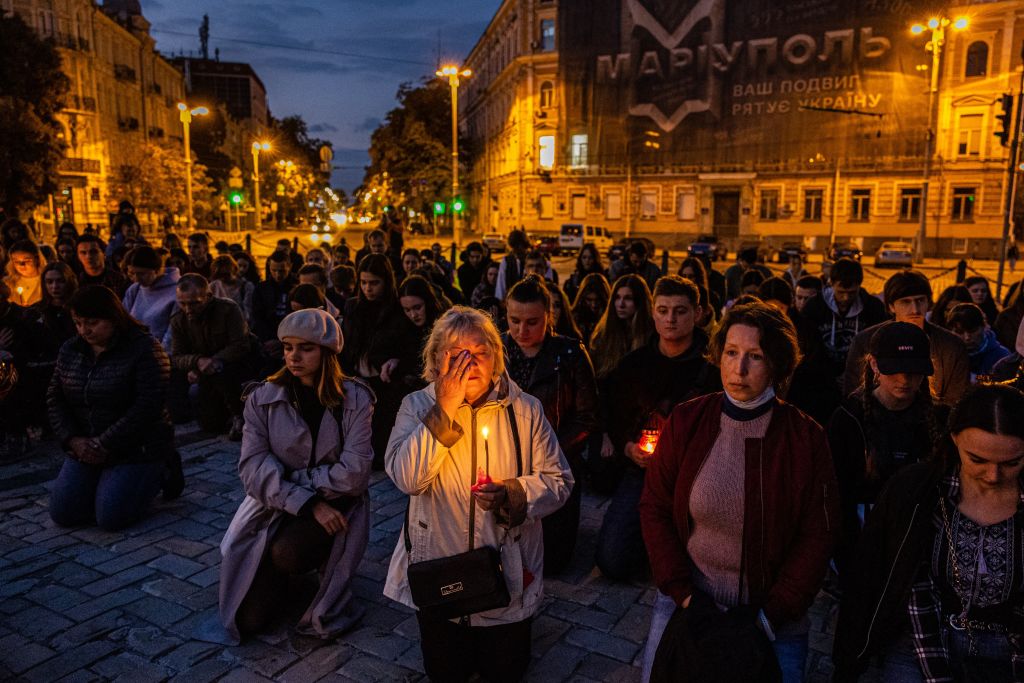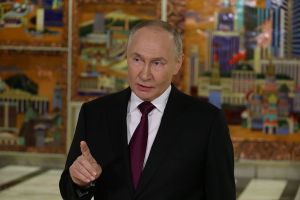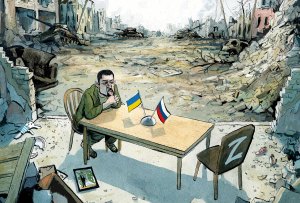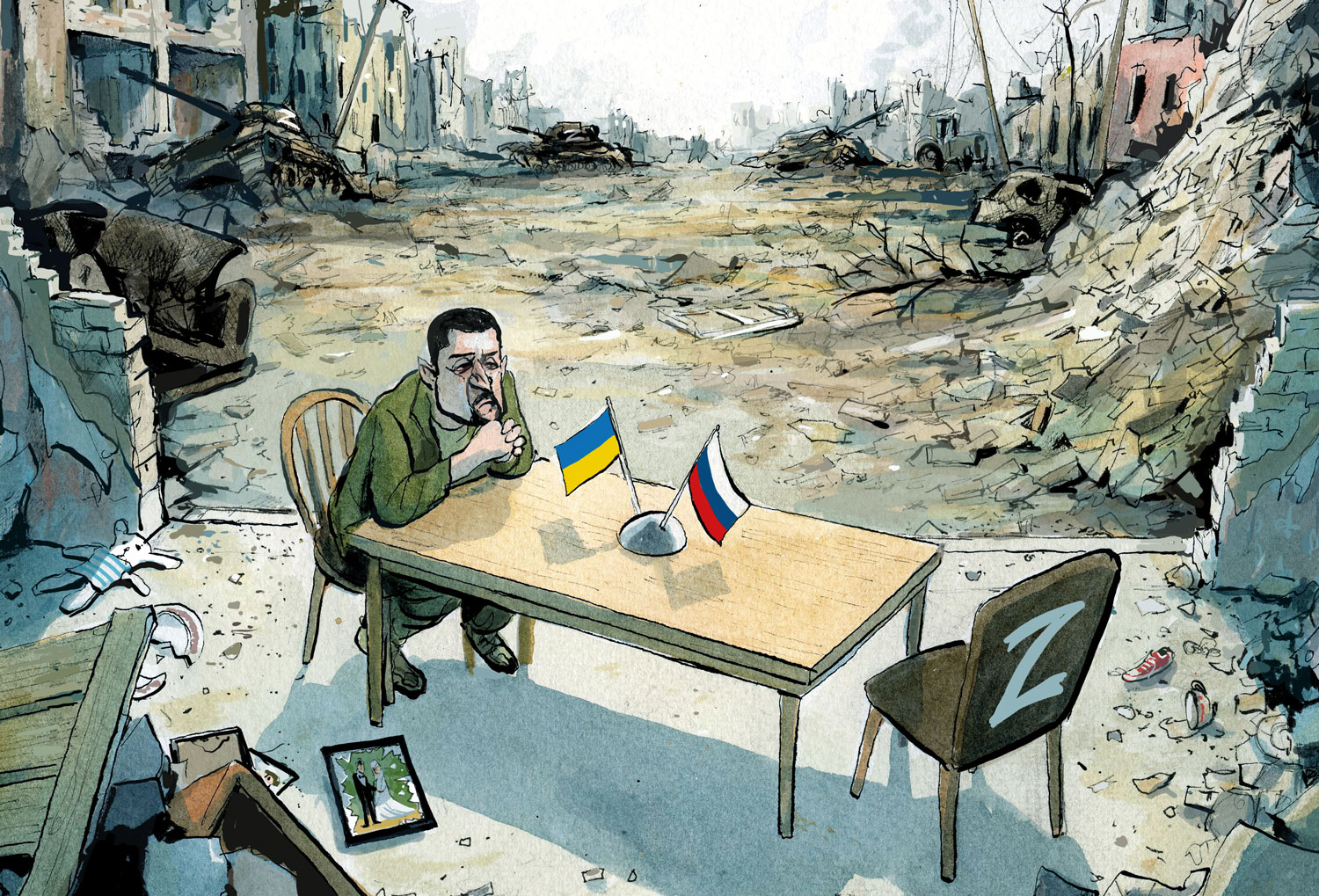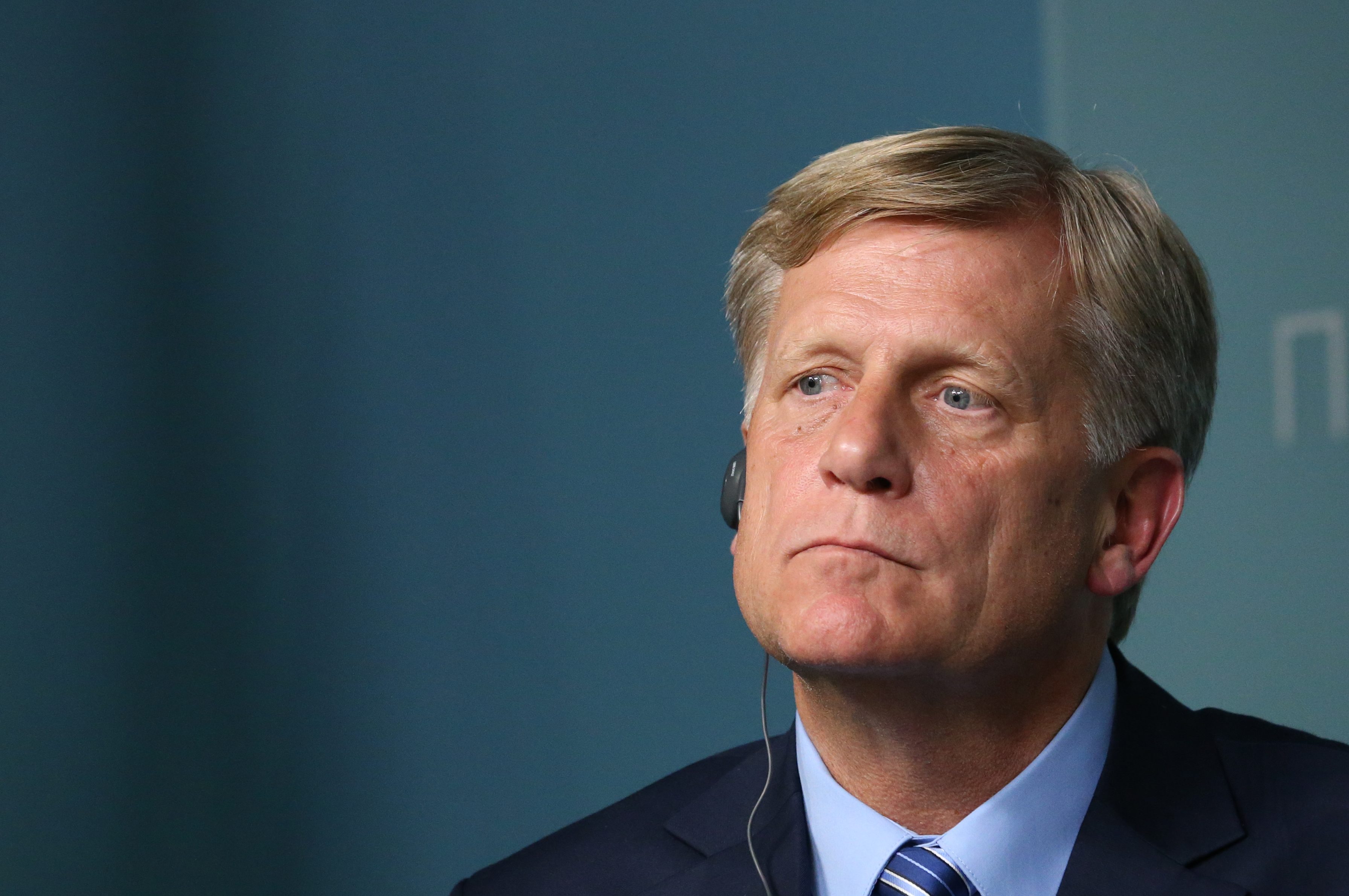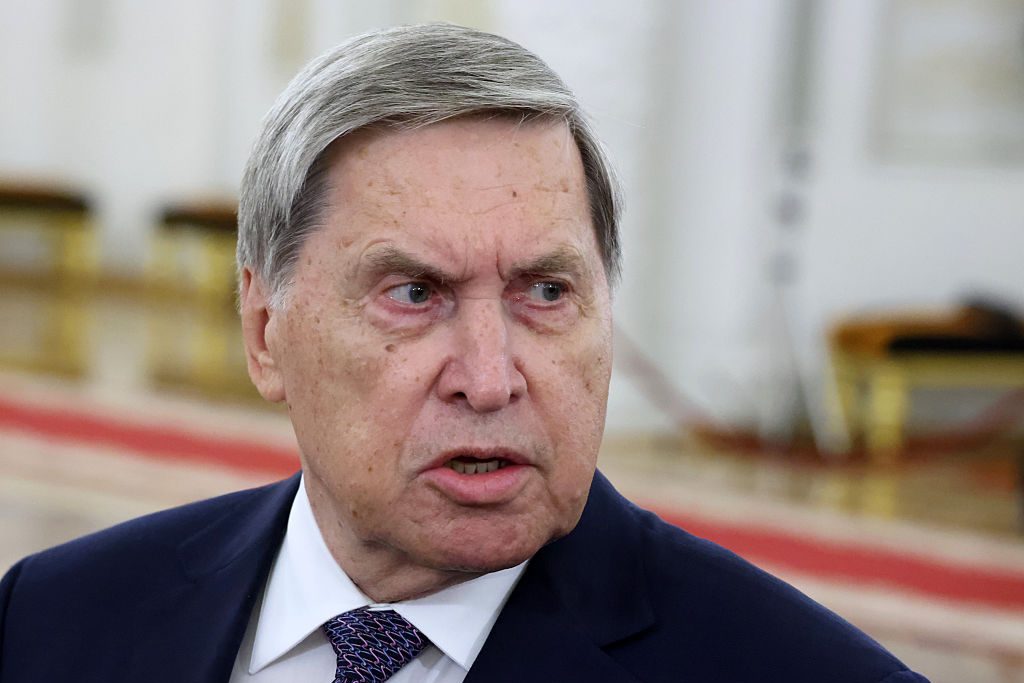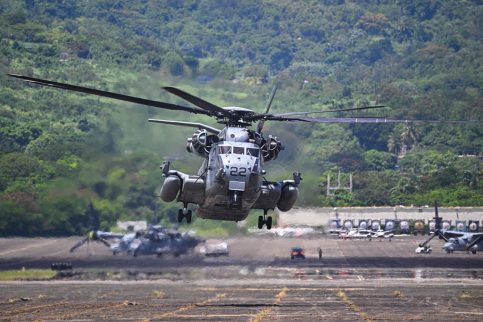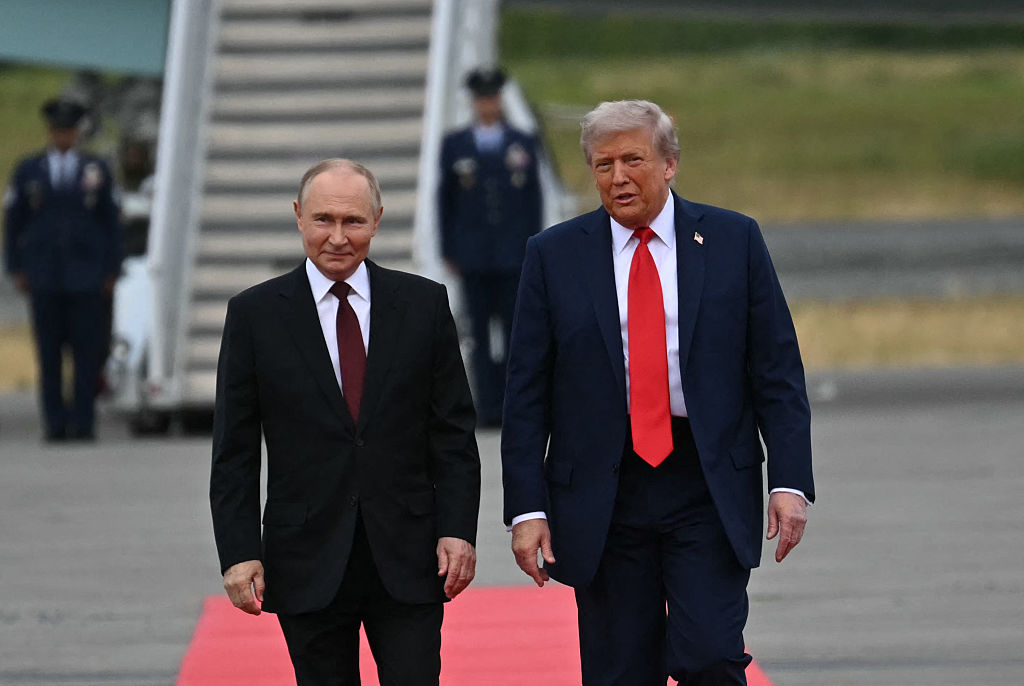Russia’s brutal war on Ukraine has moved into a new phase, a very encouraging one for Ukraine and its western allies.
In Phase 1, Russia tried — and failed — to seize the capital city of Kyiv with a blitzkrieg assault. The idea was to decapitate the Zelensky government quickly and install a puppet regime, subservient to Moscow. After that failed, Russia focused on taking the Donbas region of eastern Ukraine and forming a “land bridge” to Crimea, which Russia seized in 2014. Russia has had some success in this Phase 2 of the war, at very high cost, but movement along that front has now stalled. That’s fortunate for Ukraine, not only because it leaves most of its territory free from Russian control, but also because this kind of grinding, head-on conflict plays to Putin’s strengths. Russia has far more men and arms than Ukraine and far less regard for killing civilians or its own troops.
In both Phase 1 and Phase 2, Russia was on the attack, Ukraine on the defense. Those positions have been turned on their head in Phase 3, the fight for Zaporizhzhya, Mykolayiv, and Kherson in southern Ukraine. Zaporizhzhya and Kherson, just south of the Donbas region, are essential to complete the land bridge to Crimea. Kherson and Mykolayiv are essential stepping stones to Ukraine’s largest port, Odesa on the Black Sea.
If Russia took those oblasts (provinces) and the port of Odesa, Ukraine would be landlocked and devastated economically. Kherson, which is just north of Crimea, is also essential for control of that peninsula. That’s why Ukraine’s effort to retake Kherson is so important strategically. It’s also important psychologically, since victory there would constitute Ukraine’s first success in taking land back from the Russian invaders.
To understand this third phase of the war, it is important to understand what came before. Phase 1, the blitzkrieg, failed both militarily and politically. The military failure is obvious. Although Russia had only a short dash from its territory to the Ukrainian capital, its column of tanks and supply vehicles stalled short of their objective. Because the attack was launched in late February, when Ukraine was waterlogged, the attacking army was forced to drive down a narrow highway, surrounded by forests where Ukrainian soldiers hid with their anti-tank weapons. They cut off the column, left the soldiers trapped on the road, and then decimated them and their equipment with anti-tank weapons. Much the same happened when Russia tried to seize another major northern city, Kharkiv.
Russia’s blitzkrieg evoked near-universal political opposition among Ukrainians, including those who spoke Russian. The unprovoked attack breathed new life into the Ukrainian nation and demolished Putin’s notion that his neighbor was never a real nation, had always been part of the Fatherland, and would welcome the invasion to remove “fascist rulers.” Ukrainians considered that propaganda insulting and ludicrous.
Russia’s abject political failure has two important consequences for the ongoing war. First, it means that no puppet regime could survive without a large Russian garrison permanently on Ukrainian soil. The Kremlin simply doesn’t have the troops for that mission, even if it managed to conquer more Ukrainian territory. Second, it means resistance fighters riddle any territory Russia holds.
These partisan fighters are proving their value in the third phase of the war as they assassinate Russian commanders and local collaborators in Kherson and identify the enemy’s command centers, arms depots, river crossings, and railheads for missile attack. The Ukrainian army has used that information, plus signals intelligence from drones and US satellites, to target key sites in eastern and southern Ukraine, using artillery for nearby locations and mobile missiles (HIMARS) for those further back.
Russian sites farther from the front lines are still relatively safe since the US has refused to supply Ukraine with longer-range missiles, fearing their use might lead to a NATO confrontation with Russia. Even if Ukrainian arms can’t reach those distant locations, their precision strikes on closer targets have forced Russia to store its ammunition, food, and fuel well away from the fighting. Their distance poses serious logistical challenges for a military that routinely fails at that task. The Russians are forced to use trucks for long, slow, dangerous journeys to supply frontline fighters — and still can’t make it across the river crossings.
Cutting off those crossings traps the troops on the “wrong” side, much like a medieval siege. Doing that is the essence of Ukraine’s strategy to take Kherson. Cut them off, blow up their command centers, airports, and weapons depots with precise weapons, sever Crimea’s water supplies (which come from Kherson), and kill the enemy’s troops without any frontal assaults on entrenched positions.
Kyiv needed to move to this new phase of the war because the fight for eastern Ukraine (Phase 2, which is continuing at a slower pace) played to Russia’s strengths and Ukraine’s weakness. Russia’s strategy was to use its overwhelming firepower and manpower to complete its conquest of Luhansk and Donetsk oblasts (the Donbas provinces), which began in 2014 but was never completed. Once Russia fully controlled that terrain, it would have a “land bridge” from Russian territory to Crimea and could drive west from the Donbas into central and western Ukraine. That fight had already stalled, and Russia has now been forced to pull troops away from it to reinforce those in Kherson.
The fight for Kherson is not only a fight for that province. It is, at least indirectly, a fight for Crimea. Russia seized that peninsula in 2014 but can reach it only by two long, parallel bridges, one for trains, one for cars, trucks, and tanks. Those bridges over the Kerch Strait are beyond the reach of Ukraine’s current arsenal and are being used to bring Russian supplies over to the battle for Kherson. If Ukraine manages to retake Kherson, Crimea will be cut off from the war and militarily useless. Its major port of Sevastapol, previously the home of Russia’s Black Sea fleet, is already so vulnerable that Moscow has moved many of its vessels back to Russia.
River crossings are the key to Ukraine’s strategy in Kherson. Cut them off and the Russian army is cut off from resupply. The oblast is bisected, north-south, by the country’s largest river, the Dnieper. The provincial capital, Kherson City, lies on its north bank. A smaller river, the Inhulets, divides the eastern and western portions of the oblast.
Russia must be able to cross those two rivers with large numbers of tanks and trucks to resupply its troops. Preventing those crossings is the essence of Ukraine’s strategy in Phase 3 of the war — and they are succeeding. The idea is to isolate Russian forces north of the Dnieper, exhaust their fuel, food, and ammunition, and then kill the weakened army or force its surrender.
Ukrainian strategists know it is vital to do that without conducting frontal assaults on entrenched positions and with as little urban fighting as possible. Frontal assaults and urban fighting are extremely dangerous and require overwhelming numbers for the attacker. Ukraine doesn’t have those numbers and can’t afford to lose those troops. That’s why its strategy concentrates on severing all the river crossings, probing for weak points, and avoiding any effort to retake Kherson City. Better to let the Russians exhaust their supplies and let the enemy troops see the hopelessness of their position.
The Russians are dug in, with at least three defense perimeters around Kherson City. And they have brought in lots more troops, sending them across the Kerch bridge and down from the Donbas, prompted by Kyiv’s open forecast of an “upcoming fight for Kherson.” The Ukrainians discussed that coming battle for months, seemingly to lure Russia into sending more troops. The Ukrainians must figure that the Russian troops would eventually be cut off and forced to surrender, so it would be better to crush a larger army than a smaller one. The knock-on effect would be huge. The secondary effect is to weaken Russian positions elsewhere in Ukraine, as Moscow desperately moves troops to the south. That effect is visible this week near the northern city of Kharkiv, where the Ukrainians launched a surprise attack and are beating back the Russians.
Right now, there is a near-total blackout on battlefield operations from Ukrainian sources. The silence is an impressive show of solidarity among Ukrainians and their allies. What we are learning from Russian military bloggers is that Ukraine has destroyed all the bridges on the Dnieper and Inhulets, attacked the improvised pontoon crossings, and is moving forward on three lines of attack. So far, they have not captured any large troop concentrations, but they are retaking village after village to isolate the remaining Russian forces. They have not yet moved on Kherson City and will face a major decision about whether to attempt that deadly task before winter sets in and fighting stalls.
The fog of war is especially dense in the fight for Kherson because of Ukraine’s operational security. But it has lifted enough for us to understand that Ukraine is fighting for its national existence, and doing so with courage and very smart tactics. It has Russia on its heels, asking for negotiations, and searching for some escape from this disastrous war. For Ukraine and the democratic west, the best outcome would be an overwhelming victory. The Ukrainians are putting their lives on the line. America and NATO failed to give them the weapons they needed to deter the war. Now, they need to give them the weapons they need to win it.



